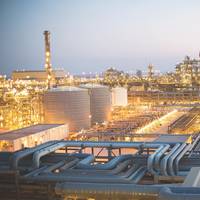IMO 2020: The Future of Fuel

There has been little reaction by way of statements or position papers from marine fuel lubricant manufacturers to the IMO MEPC70 proposals for a global fuel sulfur content cap of 0.5 percent by 2020 but they are fully aware of the implications of the proposed regulations and are taking what could be termed a ‘pragmatic approach’ to fuel regulation compliance. Marine lubricant suppliers have avoided getting involved in the debate as to whether the IMO MEPC70 proposals to reduce permissible marine fuel sulfur content to 0.5 percent or less is good…
First Marine Order for PowerCell S3 Prototypes
The fuel cell company PowerCell Sweden AB (publ) has received the first marine order for two PowerCell S3 prototype stacks, which Swiss Hydrogen will install on a ship powered by photovoltaics. “The marine industry is a very interesting area, in which our capacity to deliver electricity without emissions is extremely important. This order comprises two PowerCell S3 prototypes. The order is of strategic importance, but has a limited effect on the result. We are responsible for the fuel cells and Swiss Hydrogen will manufacture the system and conduct adjustments to certify it for the marine environment. The advantage is that our fuel cell stacks are modular and in this way we can get in a few hundred horsepower where it is required in marine applications”…
Total to Acquire Saft Group
Total and Saft announced today that, following the signature of an agreement between the companies, Total filed a friendly tender offer on all of the issued and outstanding shares in the capital of Saft with the French Financial Markets Authority (Autorité des Marchés(“AMF”)). The proposed offer will target all of Saft’s issued and outstanding shares at a price of €36.50 per share, ex-dividend of €0.85 per share, valuing Saft’s equity at €950 million. The offer price represents a 38.3% premium above Saft’s closing share price of €26.40 on May 6, 2016, a premium of 41.9% above the volume weighted average share price over the past six months and a premium of 24.2% above the volume weighted average share price over the past year.
Statoil Debuts Batwind
A new battery storage solution for offshore wind energy will be piloted in the world’s first floating wind farm, the Hywind pilot park off the coast of Peterhead in Aberdeenshire, Scotland. Batwind will be developed in co-operation with Scottish universities and suppliers, under a new Memorandum of Understanding (MoU) signed in Edinburgh on 18 March between Statoil, the Scottish Government, the Offshore Renewable Energy (ORE) Catapult and Scottish Enterprise. Battery storage has the potential to mitigate intermittency and optimise output. This can improve efficiency and lower costs for offshore wind. The pilot in Scotland will provide a technological and commercial foundation for the implementation of Batwind in full-scale offshore wind farms…
Bollore First Half Boosted by Transport, Advertising Unit
French industrial group Bollore said first-half operating income rose 11 percent to 314 million euro because of strength at its transport business and advertising agency Havas, even as it kept investing in electricity storage. Turnover fell 5.2 percent to 5.1 billion euros ($6.71 billion) , while core earnings before interest, tax, depreciation and amortisation (EBITDA) rose 7 percent to 469 million. (1 US dollar = 0.7604 euro) (Reporting by Geert De Clercq; Editing by Leila Abboud)
KEMA Collaborates on Offshore Energy Storage System
KEMA, in partnership with civil engineering firm Bureau Lievense and technology illustrators Rudolph and Robert Das, has developed an “Energy Island” concept to store power generated from an offshore wind farm. The innovative concept design is the initial result of an on-going feasibility study being conducted for Dutch energy companies. The Energy Island designed by KEMA, Lievense and the Das brothers incorporates a new concept in pumped hydro storage – an inverse offshore pump accumulation station (IOPAC). On the Energy Island when there is a surplus of wind energy, the excess energy is used to pump sea water out of the interior ‘subsurface-lake’ into the surrounding sea.







